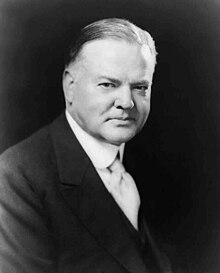Search This Blog
Sunday, April 15, 2012
Herbert Hoover
Served as president from 1929-1933
Era: The Great Depression and WWII
American Identity and Culture
Hoover was president when the Great Depression began within the United States. Because of this, many people migrated west for job opportunities. They were called “Okies” because they came from states like Oklahoma. Many were looked down upon. These migrants would pack all their belongings with them and travel west. However, once they reached their destination, they discovered that it was no different from home. They struggled to find jobs and many lived in “Hoovervilles.” These were shanty towns of the poor and homeless. Although, the nation was experiencing a depression, Hoover was reluctant to provide government aid. He believed in “rugged individualism” where people were responsible for changing their own condition.
Economic Transformations and Globalization
The Great Depression began with the Wall Street Crash. This became known as Black Thursday—October 24, 1929—when there was an unprecedented volume of selling, and stock prices plunged dramatically. The next day, a group of bankers bought millions of dollars in stocks to try and stabilize prices, but the selling frenzy resumed Monday. On Black Tuesday, millions of investors ordered banks to sell when no buyers could be found. Wall Street continued to spiral downward from that day on. Some causes of the stock market crash can be attributed to an uneven distribution of income, stock market speculation, an excessive use of credit, overproduction of consumer goods, a weak farm economy, government policies, and global economic problems.
Environment
The Great Depression was also caused in part by the Dust Bowl. This was an event in which areas of American prairie states experienced ecological damage due to huge clouds of soil. Mismanagement of grazing land and severe winds swept unprotected soil into dust storms. The land was turned dry and brittle because of over farming along with the appearance of new technology, like mechanized farming tools, contributed to the Dust Bowl. This event would lead to both economic and health hardships for many.
Politics and Citizenship
The election of 1932 resulted in a Democratic victory. Not only did their candidate win the presidency, but both houses of Congress had large Democratic majorities as well. Hoover was labeled as the “lame duck” president as he was powerless to deal with the depression which continued to get worse during the time between Roosevelt’s election and his inauguration. The Twentieth Amendment, also known as the lame duck amendment, passed in 1933 shortened the period between presidential election and inauguration. It set January 20 as the new date for the start of a president’s term in office.
Slavery and its legacies in North America
Hoover was not concerned with civil rights while he was president. He believed that African Americans could improve themselves with education. He encouraged them to assimilate into white culture. In 1930, he attempted to appoint John J. Parker in the Supreme Court. The NAACP fought his nomination however. They claimed that he made many court decisions against African Americans. In the end, they succeeded.
War and Diplomacy
In 1931, Japan invaded Chinese Manchuria. This region had long been coveted by Japanese expansionists for its mineral rich and agriculturally productive land. Hoover decided not to take an immediate American response, but the Japanese invasion had violated the Kellogg-Briand Pact of 1929 which renounced war as an “instrument of national policy.” The League of nation issued a resolution that demanded the Japanese to withdraw from Chinese territory. It was ignored, and the U.S. issued the Stimson Doctrine. This basically meant that the United States would not recognize Japan’s territorial gains in China.
Subscribe to:
Post Comments (Atom)

No comments:
Post a Comment